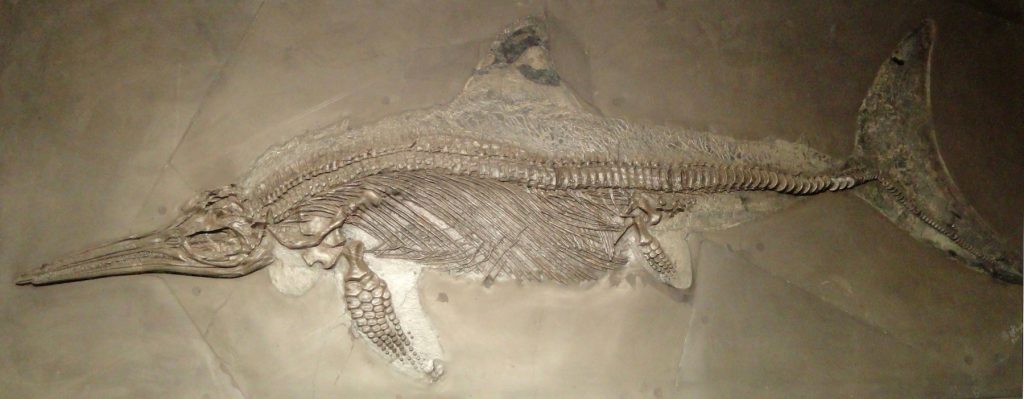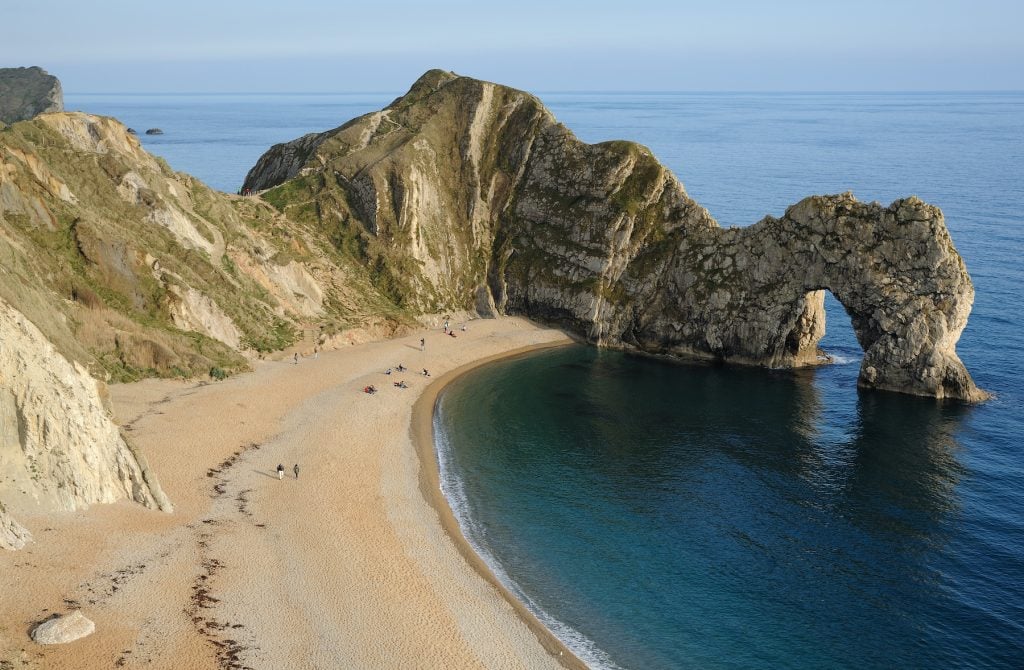Art World
An Amateur Archaeologist Stumbled Across This Rare Fossil of a Prehistoric ‘Fish Lizard’ While Taking His Dogs for a Walk
The lucky discovery of an ichthyosaur was made on what's known as the 'Jurassic Coast.'

The lucky discovery of an ichthyosaur was made on what's known as the 'Jurassic Coast.'

Karen Chernick

Most pet owners can’t tell the difference between a fossilized ichthyosaur and a dolphin skeleton. But in southwestern England, where prehistoric bones wash up on the coastline every so often, even dog walkers can spot extinct marine reptiles that predated dinosaurs.
Jon Gopsill, an amateur archaeologist from Somerset, was walking his dogs on the beach on Saturday when he happened upon the five-and-a-half foot long fossilized remains of an ichthyosaur many million years old. Stormy weather conditions had exposed the fossil, revealing a recognizable pattern of thin ribs extending from a hunched and extended spine.
“I realized that it was amazing, museum quality stuff, as soon as I saw it I knew I found something special,” Gopsill explained to The Daily Mail. He immediately reported his find to Somerset Heritage and the Natural History Museum in London.
Ichthyosaurs (from the Greek for ‘fish lizard’) were marine reptiles that lived roughly 201 and 194 million years ago. They resembled dolphins, and were abundant during the Jurassic period.

The Durdle Door, a natural limestone arch on the Jurassic Coast near Lulworth in Dorset, England. Photo by Saffron Blaze, Creative Commons Attribution-Share Alike 3.0 Unported license.
“Based on the number of bones in the pectoral paddle, the apparent absence of a pelvic girdle, as well as the distinctive ‘hunch’ of the back, this is likely to be the remains of an ichthyosaur,” Dr Mike Day, curator of fossil reptile collections at London’s Natural History Museum, told the Daily Mail. “It is not possible to identify the exact type of ichthyosaur from these images alone however.”
Ichthyosaurs are not a completely outlandish sight in Gopsill’s stomping grounds. Stolford, the beach where he was walking his dogs, is an hour-and-a-half drive from what is known as the Jurassic Coast. Dorset and East Devon, along that coast, have been classified as a UNESCO World Heritage Site since 2001 and people there are always on the lookout for prehistoric finds.
The first identified ichthyosaur was discovered on the Jurassic Coast, in Lyme Regis, in 1810. Joseph Anning found an ichthyosaur skull and a year later his 12-year-old sister, Mary Anning, found and excavated the rest of the 17-foot-long skeleton. Their discovery (now in the collection of London’s Natural History Museum) was studied for years, and eventually named ichthyosaurus.
Gopsill may have found a museum-level fossil, but the specimen has no head. He’ll keep looking for it, he says. Maybe on his next dog walk.